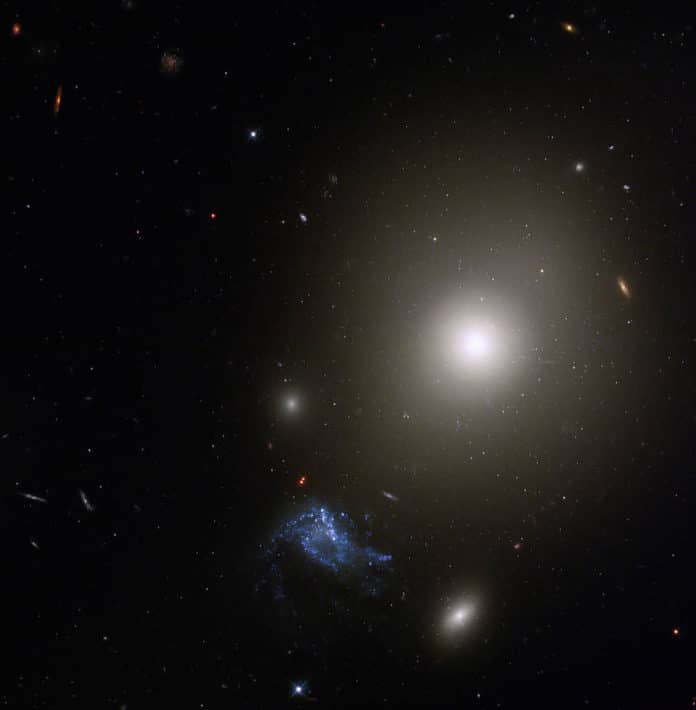NASA/ESA Hubble Space Telescope shares an image of striking pair of an elliptical galaxy NGC 541 and an unusual star-forming, irregular dwarf galaxy known as Minkowski’s Object. Located at circa 230 million light-years from Earth in a constellation Cetus, NGC 541 is about 130,000 light-years across. Minkowski’s Object, which appears bluish object to the lower left of NGC 541, is about 7.5 million years old and consists of approximately 20 million stars.
NGC 541 emits radio jets invisible to the human eye, but radio telescopes can detect them. These jets arise from the accretion disk around the galaxy’s central black hole.
Minkowski’s Object is located in the path of the radio jet of NGC 541, and there is strong evidence that the jet has caused a starburst in Minkowski’s Object. The stellar population in Minkowski’s Object is dominated by stars formed in a single event 7.5 million years ago.
NASA noted in the blog, “Radio galaxies like NGC 541 are surrounded by gaseous halos and/or debris from recent merger events – which may have triggered the radio galaxy activity. The jet plows into the moderately dense, warm gas around the galaxy, and the shock compresses and heats the gas, causing it to become energized or ionized. As the ionized gas reverts from its higher-energy state to a lower-energy state, energy leaves the cloud in the form of radiation. As the clouds cool, they collapse, giving rise to star birth.”
“Hubble observed Minkowski’s Object and NGC 541 to get a better sense of how star formation occurs in this region, what kind of star formation takes place, and the properties of the jet that triggers it.”
